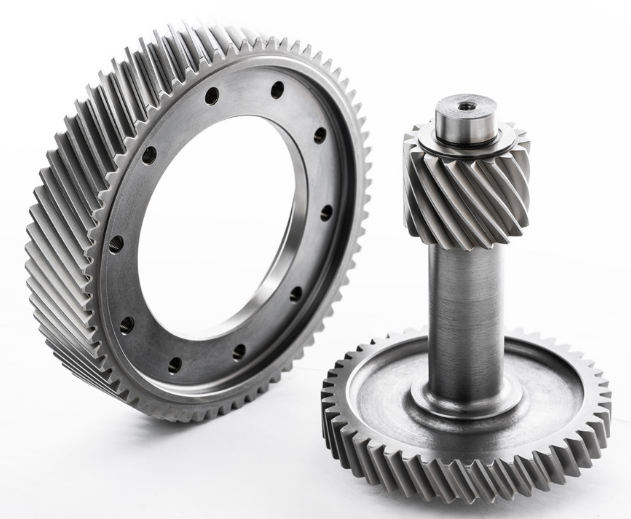1. Definitions
Pinion: The smaller gear in a meshing pair, often the driving gear.
Gear: The larger gear in the pair, usually the driven component.
2. Key Differences
| Parameter | Pinion | Gear |
| Size | Smaller (fewer teeth) | Larger (more teeth) |
| Role | Typically the driver (input) | Typically the driven (output) |
| Speed | Higher RPM (due to fewer teeth) | Lower RPM (due to more teeth) |
| Torque | Lower torque transmission | Higher torque transmission |
| Material | Often hardened steel (wear resistance) | May use softer materials depending on application |
3. Common Gear-Pinion Configurations
Spur Gears (Parallel shafts)
Helical Gears (Angular/parallel, smoother operation)
Bevel Gears (Right-angle transmission, e.g., differentials)
Rack & Pinion (Converts rotary to linear motion, e.g., steering systems)
Worm & Pinion (High reduction ratio, e.g., elevators)
4. Applications
| Industry | Pinion & Gear Use Case |
| Automotive | Differential gears, starter motors |
| Industrial | Gear reducers, conveyor systems |
| Aerospace | Actuators, landing gear systems |
| Robotics | Precision motion control |
5. Design Considerations
Gear Ratio = (Number of teeth on gear) / (Number of teeth on pinion)
Pressure Angle (Common: 20° or 14.5°) affects load capacity & noise.
Module (Metric) / Diametral Pitch (Imperial) defines tooth size.
6. Manufacturing & Inspection
Gleason, Klingelnberg, and Mitsubishi machines for high-precision gears.
Hardening processes (Carburizing, induction hardening) improve durability.
Gear inspection (Profile, pitch, runout checks) ensures performance.
Post time: Aug-08-2025






